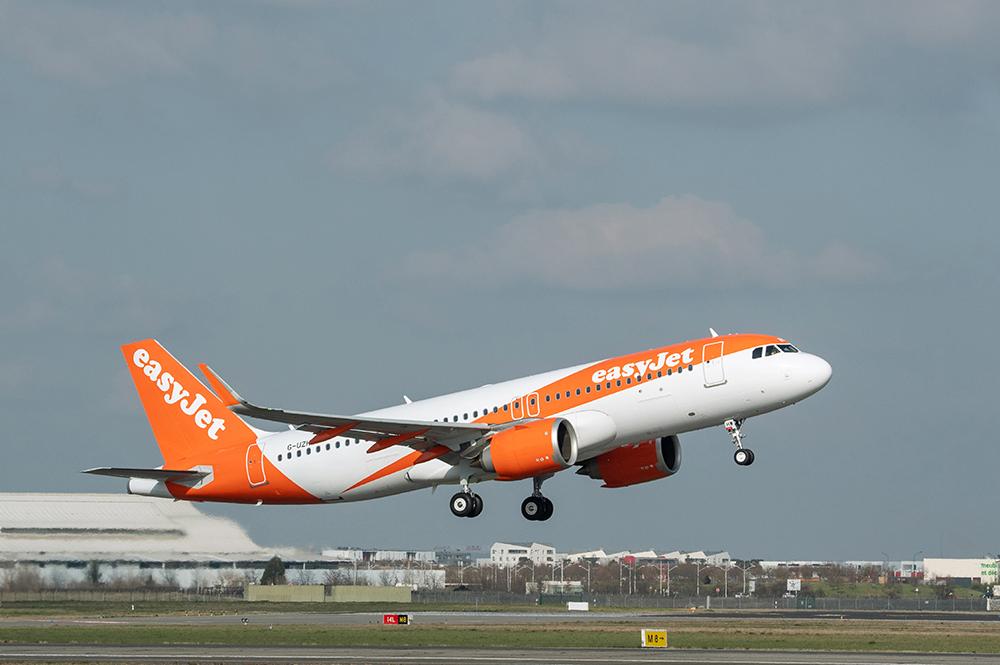
Predictive maintenance is paying off for UK low-cost carrier easyJet. It is growing its partnership to support its large, 328 A320-family aircraft fleet with predictive maintenance. Swaran Sidhu, easyJet’s head of fleet technical management, told attendees at IATA’s recent Maintenance Cost conference that the airline has already achieved major benefits with just the first stages of the predictive approach.
The carrier’s journey to predictive tools began in 2015 with the start of a three-year study of flight data by Airbus. At the end of this study, easyJet signed a partnership with the OEM, began retrofitting Airbus’s flight operations and maintenance exchange (FOMAX) system, and adopted the Skywise predictive program designed by Airbus and Palantir.
Massive operating data began to be transmitted to FOMAX in 2019, and in the next two years easyJet and Airbus validated the first set of predictive models. FOMAX installation on easyJet’s fleet resumed after a delay due to COVID-19, and it was completed in 2022.
Smarter models require massive data. Before FOMAX and Skywise, EasyJet collected about 390 flight parameters. Now, Skywise exploits up to 24,000 parameters to make its predictions.
Skywise’s predictive algorithms are defined using not just massive historic flight data, but also very detailed data on component repairs. The aim is early spotting of deviations from correct component behavior so flight data alerts can then be sent out. To avoid no fault founds (NFFs), the predictive alert threshold is set above the shop test fault threshold. According to easyJet, this approach clearly works.
“Components removed via predictive maintenance have a 5% lower NFF rate than those removed via reactive maintenance,” Sidhu stressed.
Sidhu pointed to a faulty engine fuel twin motor actuator as an example of predictive maintenance at work. If left to fail on wing, more than three quarters of the time to repair this part would put the aircraft out of service for more than three hours.
Predictive algorithms gave easyJet its first alert of actuator misbehavior on Sept. 14. A second alert went out on Sept. 21, due to repeated breaches of the behavior threshold. The misbehaving part was replaced at the next convenient opportunity, on Oct. 10.
EasyJet’s predictive journey is far from complete. By late August 2022, EasyJet had only 13 predictive models firmly in pace. It is now calibrating or developing 87 more predictive models.
According to Sidhu, the airline avoids 35 cancellations and 12 minor delays in one month alone using just those 13 live models. To date, the predictive approach has saved “hundreds of cancelations, hundreds of major delays and many more minor delays,” Sidhu told the conference attendees. “Imagine what this could look like with 100 live models!” he added.
EasyJet is now working more closely with OEMs and shops on testing, while it also tracks rogue units and analyzes its NFFs more closely. Sidhu wants to improve easyJet’s handling of data in-house and tap its component experts on future opportunities to use predictive maintenance.
FOMAX, now installed on all the fleet, will provide other gains. For example, Sidhu cited satcom connectivity to transmit data to electronic flight bags and the ability to interface with cabin entertainment systems.
But the real gains of predictive maintenance are already being achieved: reduced AOGs, fewer delays and cancelations, fuel savings, better passenger experience and leaner spares and inventories.





Comments